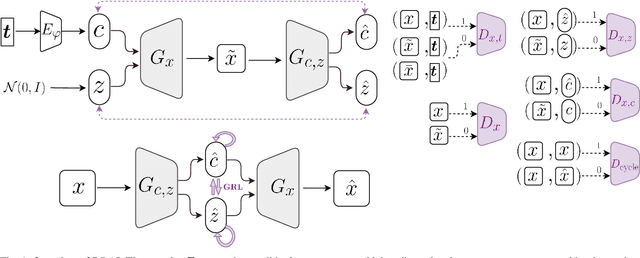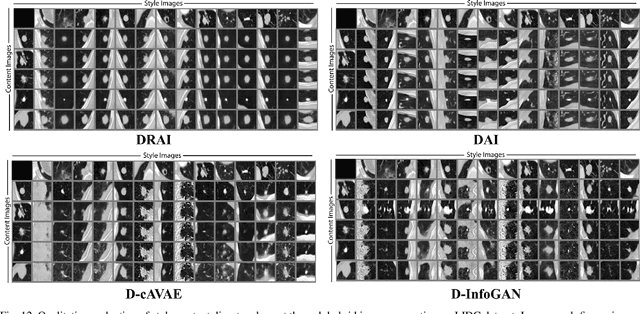Conditional Generation of Medical Images via Disentangled Adversarial Inference
Paper and Code
Dec 08, 2020



Synthetic medical image generation has a huge potential for improving healthcare through many applications, from data augmentation for training machine learning systems to preserving patient privacy. Conditional Adversarial Generative Networks (cGANs) use a conditioning factor to generate images and have shown great success in recent years. Intuitively, the information in an image can be divided into two parts: 1) content which is presented through the conditioning vector and 2) style which is the undiscovered information missing from the conditioning vector. Current practices in using cGANs for medical image generation, only use a single variable for image generation (i.e., content) and therefore, do not provide much flexibility nor control over the generated image. In this work we propose a methodology to learn from the image itself, disentangled representations of style and content, and use this information to impose control over the generation process. In this framework, style is learned in a fully unsupervised manner, while content is learned through both supervised learning (using the conditioning vector) and unsupervised learning (with the inference mechanism). We undergo two novel regularization steps to ensure content-style disentanglement. First, we minimize the shared information between content and style by introducing a novel application of the gradient reverse layer (GRL); second, we introduce a self-supervised regularization method to further separate information in the content and style variables. We show that in general, two latent variable models achieve better performance and give more control over the generated image. We also show that our proposed model (DRAI) achieves the best disentanglement score and has the best overall performance.
 Add to Chrome
Add to Chrome Add to Firefox
Add to Firefox Add to Edge
Add to Edge